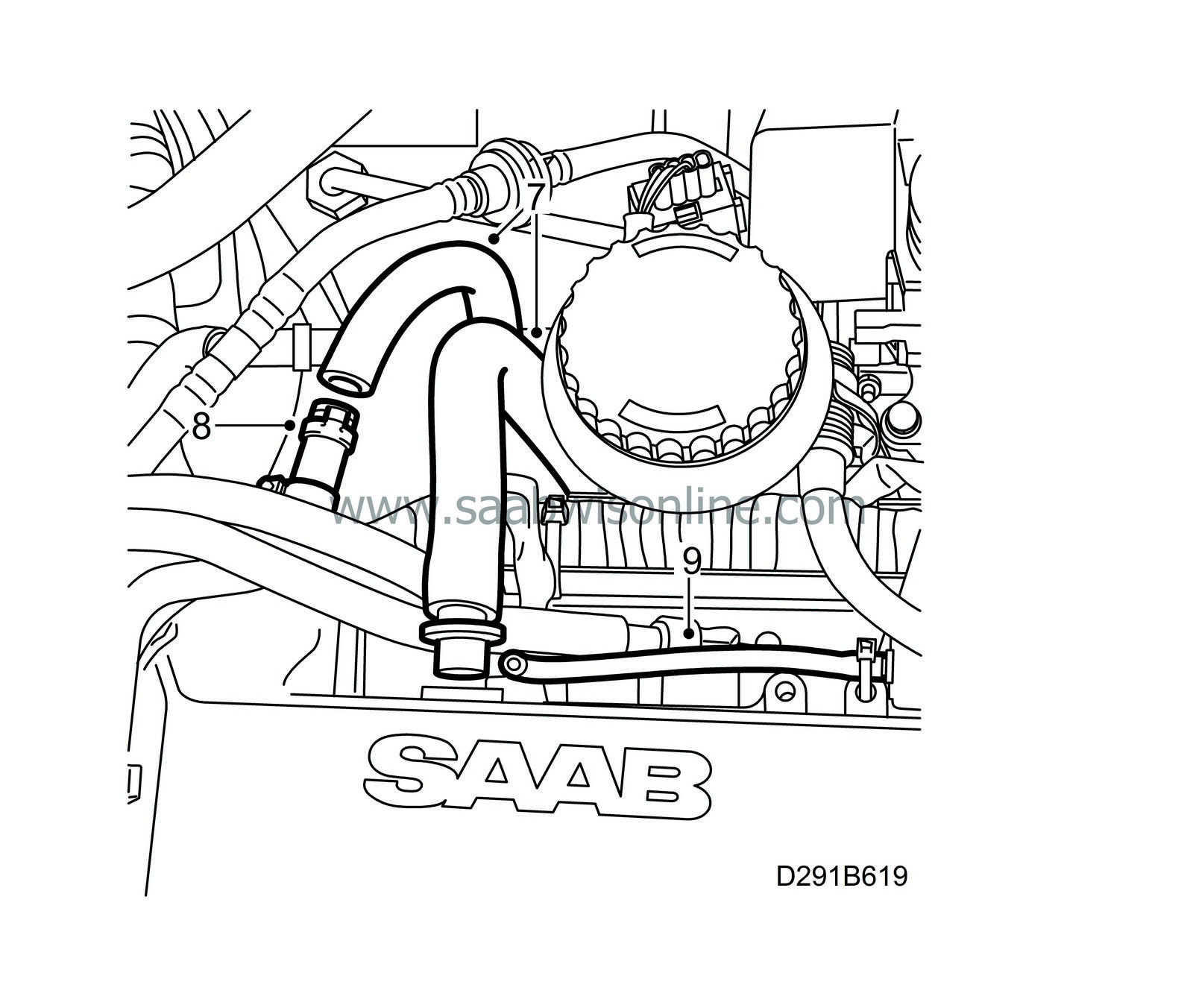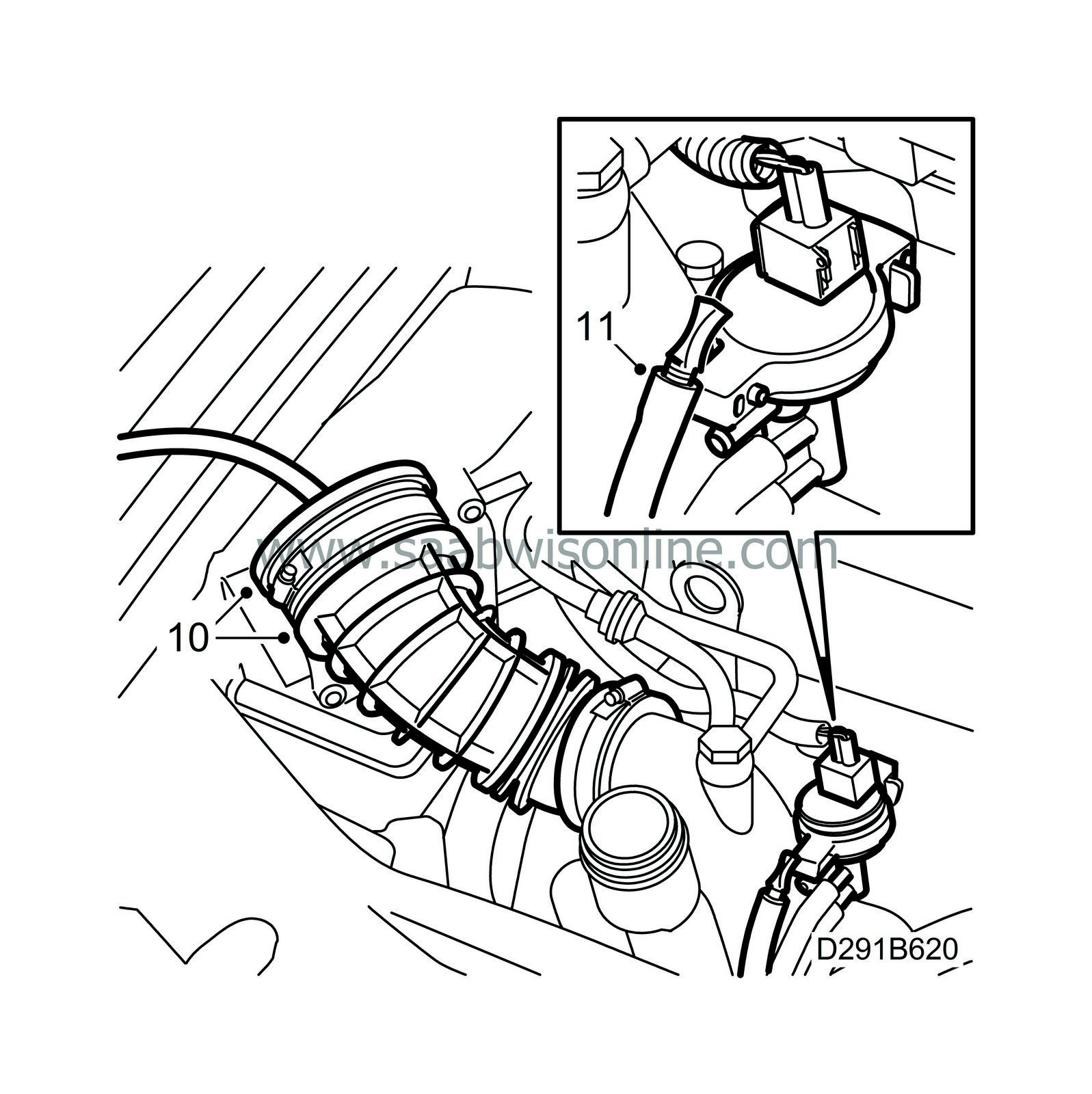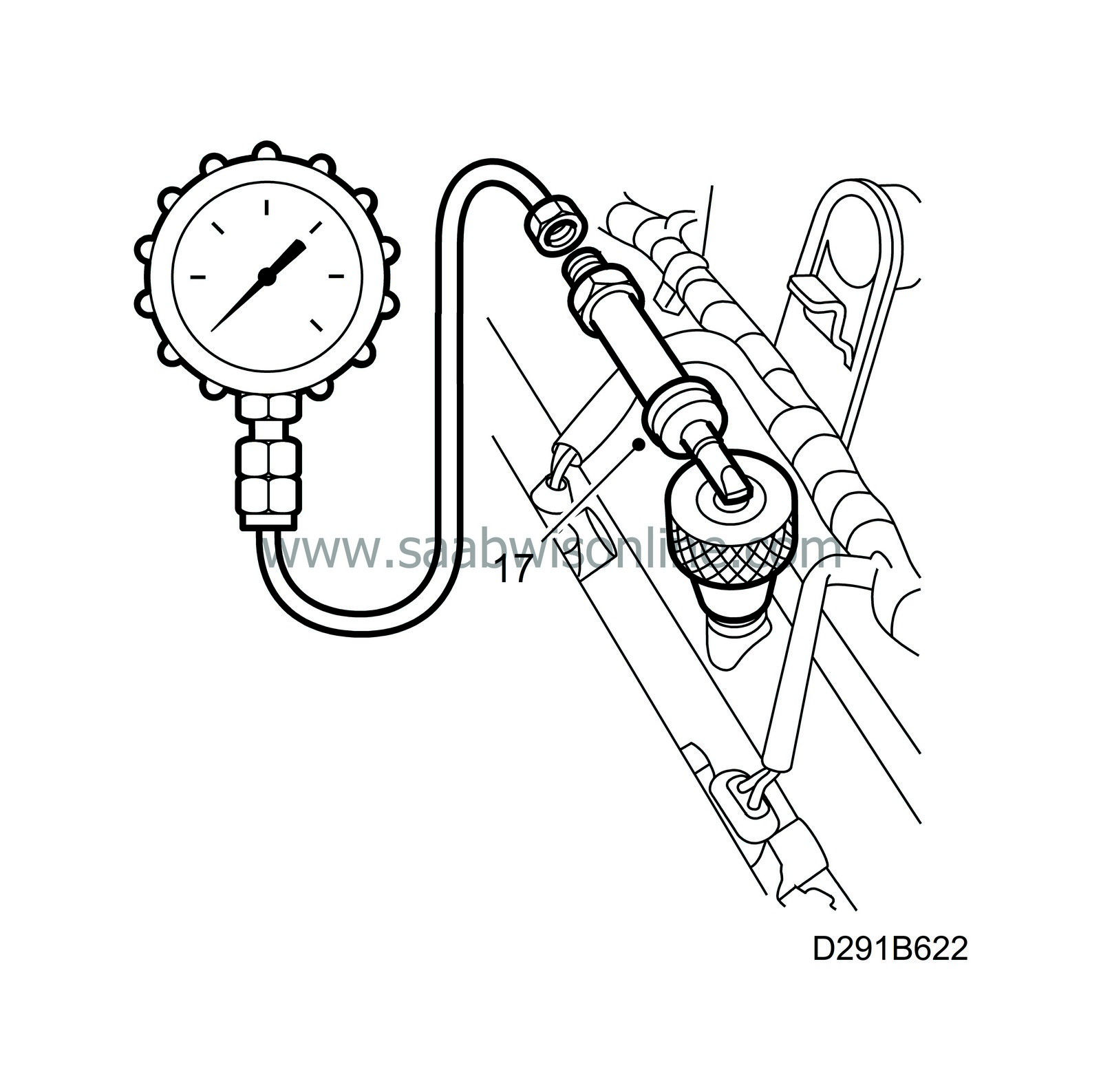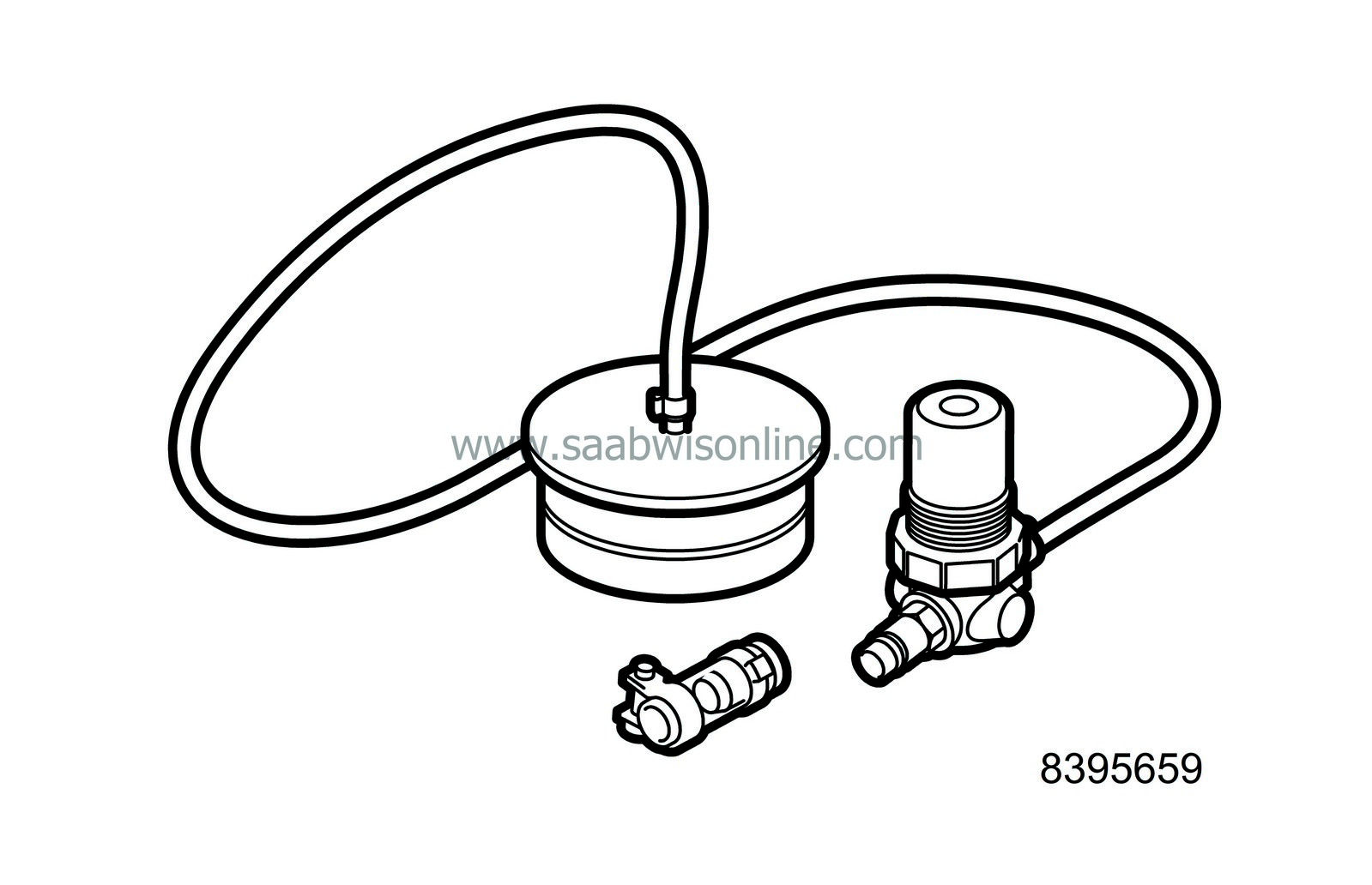(248-2241) Air leak testing of intake system, Trionic T7 4 cyl.
Symptom: The car may have one or more of the following symptoms:
Poor driveability
Reduced performance
Engine has uneven or low idling speed
Surge or hesitation upon acceleration
CHECK ENGINE lamp on
|
SERVICE INFORMATION
|
|
Bulletin Nbr:
|
248-2241
|
|
Date:
...........
|
November 2000
|
|
Market:
|
all
|
|
|
Air leak testing of intake system, Trionic T7 4 cyl.
|
Saab 9-3 with engines B235R M99-, B205L /R M00-
The car can exhibit certain fault symptoms without generating a diagnostic trouble code. This can be due to an air leak in the system or insufficient fuel pressure and flow capacity.
The fault diagnosis listed below includes checking air leaks, fuel pressure, flow capacity and adaptation proceedures. If a trouble code is present the appropriate fault diagnosis procedure should be used. The method below is to be used if the problem can not be traced with a diagnostic trouble code.
Symptom description
The car may have one or more of the following symptoms:
|
•
|
Engine has uneven or low idling speed
|
|
•
|
Surge or hesitation upon acceleration
|
16-30 04 223 Electronics cleaner
|
1.
|
Make 2 copies of the checklist at the end of this document. Fill out one of the copies before initiating diagnostic procedures.
|
|
3.
|
Remove the upper engine cover.

|
|
4.
|
Connect the measurement tool for boost pressure 83 93 514 via a T-line to the intake pressure connector on the engine's intake manifold.
|
|
5.
|
Detach the charge air pipe and wipe clean the inside of the throttle body. Moisten a lint-free rag with electronics cleaner, part number 16-30 04 223.
|
|
6.
|
Coat the charge air pipe's O-ring with vaseline and mount it on the throttle body. If needed, replace the O-ring.
Pressure test the system as follows:
|
|
7.
|
Detach the crankcase ventilation hoses at the camshaft covers and at the line to the banjo fitting.

|
|
8.
|
Plug the crankcase ventilation line at the cylinder head. Use the hose plug in the plug kit 83 95 659
|
|
9.
|
Detach the hose from the check valve.
|
|
10.
|
Detach the hose from the mass air flow sensors. Mount plug kit 83 95 659 in the hose and connect the accompanying pressure regulator to an external air pressure outlet.

|
|
11.
|
Detach and plug the uppermost signal hose to the boost pressure control valve (connection R).
|
|
12.
|
Detach the lower quick-release coupling to the evap canister purge valve.

|
|
13.
|
Pressurize the intake system by carefully turning the pressure regulator until a maximum 0.6 bar of overpressure is attained. The value should be monitored using the pressure measurement tool 83 93 514.
|
|
14.
|
This pressurizes the entire intake system allowing leaks to be located by use of leak detecting spray or soapy water. Check all components, hoses and connections. Fix any leaks that can be heard.
|
|
15.
|
Remove the plugs and connect the hoses to the mass air flow sensor, the boost pressure control valve, the evap canister purge valve and the crankcase ventilation.
|
|
16.
|
Check the control module's software version in Tech 2. If there is a more recent version in WIS it should be programmed in to the control module.
Checking fuel pressure / flow capacity
|
|
17.
|
Connect the fuel pressure measurement tool 83 93 852 using adapter 83 94 744 to the connector nipple on the fuel-injection rail. Pull the signal hoses with the manometers for fuel pressure and intake pressure into the passenger compartment via the side window. Be sure that the hoses are not pinched.

|
|
18.
|
Measure fuel pressure while driving with as high a load as possible. Read the measurements on the manometers. The pressure differential should always be 3 bar of fuel pressure according to the table below.
Drive therafter with varying load and engine speed. Check that the fuel pressure follows the pressure in the intake manifold.
If the pressure differential is wrong, check the fuel pressure regulator, the fuel pump and the fuel lines - inflow and return. Check that the tank purge valve functions. See WIS - Engine - Evaporative emission system ORVR - Adjustment/replacement - Leakage check in evaporative emission system.
Pressure, intake manifold
|
Fuel pressure
|
-0.6 to -0.4 bar
|
2.4-2.6 bar
|
0 bar (atmospheric pressure)
|
3.0 bar
|
0.6 bar
|
3.6 bar
|
|
|
19.
|
Check the fuel adaptation with the help of Tech 2. Carry out the adaption as follows:
|
|
|
19.a.
|
Turn off the A/C or ACC.
|
|
|
19.b.
|
Engine temperature should be over 80°C and the engine should have been running for at least 3.5 minutes. The adaptation must be completed within 10 minutes of engine start-up.
|
|
|
19.c.
|
Drive on a flat road at between 1500 - 2750 rpm in 5th or 4th gear, attempting to keep the accelerator pedal completely still for approximately 2 minutes.
|
|
|
19.d.
|
Stop the car and let the engine idle.
|
|
|
19.e.
|
Read "multiplicative adaptation" on Tech 2.
|
|
|
19.f.
|
Read "additive adaptation" on Tech 2. If the value does not appear within 10 minutes, turn off and restart the engine and repeat steps 19b - 19f. If the value still does not appear, go to step 24.
|
|
20.
|
Carry out the adaptation of the throttle opening.
|
|
|
20.a.
|
Coolant temperature should be over 80°C. Turn off the A/C or ACC.
|
|
|
20.b.
|
Let the engine idle for 2 minutes. Turn off the engine.
|
|
|
20.c.
|
Repeat step 20b 3 times.
|
|
21.
|
Fill out the second copy of the checklist.
|
|
22.
|
Disconnect the pressure measurement tools and Tech 2.
|
|
23.
|
Replace the upper engine cover.
|
|
24.
|
If the problems have not been solved, contact the importer's technical support. Have the checklists that were filled out ready.
|
|
1.
|
Describe the fault symptom .......................................................................................................................................
...................................................................................................................................................
....................................................................................................................................................
|
|
3.
|
Turn off A/C or ACC and let the engine idle. Coolant temperature should be over 80°C.
|
Note
|
|
Diagnostic trouble codes may not be erased.
|
|
|
4.
|
Read and note any diagnostic trouble codes: .......................................................................................................................
|
|
5.
|
Choose "Engine" - "Trionic" - "Read value / Activate" in Tech 2. Read and note the following values:
|
|
|
Unit
|
Turn Ignition On
|
Idle
|
Desired value
|
Engine speed
|
rpm
|
-------------
|
|
800-850
|
Air mass/Combustion
|
mg/c
|
-------------
|
|
|
Coolant temperature
|
°C
|
|
|
85-100
|
Variation from measured air mass
|
%
|
-------------
|
|
max 10
|
Intake air temperature.
|
°C
|
|
|
40-60
|
Atmospheric absolute pressure
|
kPa
|
|
|
90-115
|
Charge air absolute pressure
|
kPa
|
|
|
95-110
|
Intake manifold absolute pressure
|
kPa
|
|
|
25-60
|
Additive adaptation
|
mg/c
|
|
|
max 0.6
|
Multiplicative adaptation
|
%
|
|
|
max 6
|
Charge air adaptation
|
%
|
|
|
max 10
|
|
|
Number of knockings
|
Number of missfires
|
Cylinder 1
|
|
|
Cylinder 2
|
|
|
Cylinder 3
|
|
|
Cylinder 4
|
|
|
Under “system information” you will find information on chassis and version numbers for Trionic T7
Chassis number
|
|
Software version
(obligatory)
|
|
The plate with the engine number is placed on the cylinder block according to WIS - Engine - Base engine, gasoline - Technical data - Engine number.
To see the colour of the injectors, remove the upper engine cover.
Engine number
|
|
Fuel injector, colour
|
|
|
Standard times-/Warranty information
|
In the case of customer complaint and if the car is
within the warranty period
, use the following information to fill out the claim:
Failed Object: 24810
Fault/Reason code: 08
Location code: 09 (US=9)
Warranty Type (US):01
Repair/Action code: 08
Labor Operation (US): Straight time 1.5 hours
Time: 1.5 hrs.








